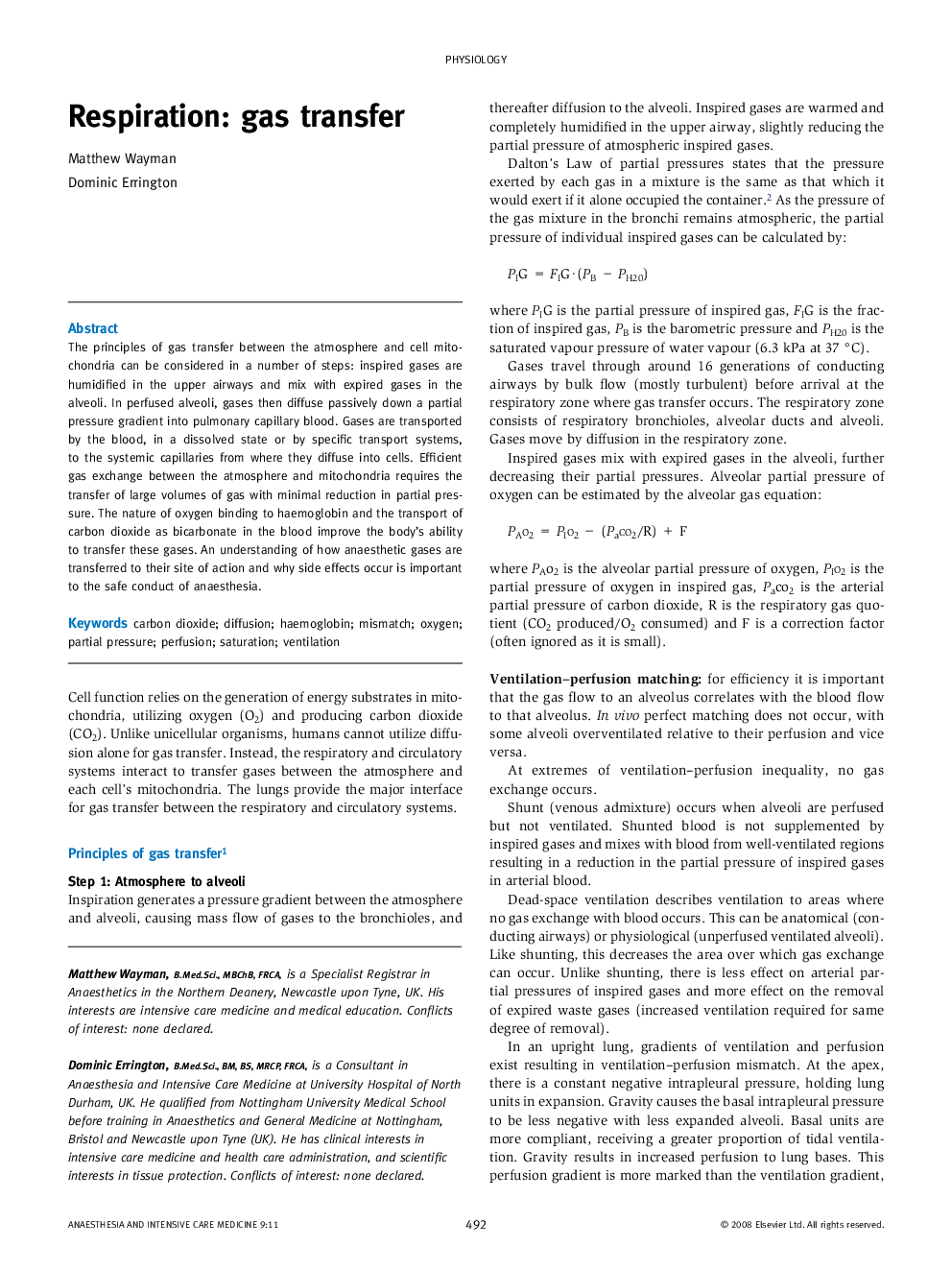| Article ID | Journal | Published Year | Pages | File Type |
|---|---|---|---|---|
| 2743687 | Anaesthesia & Intensive Care Medicine | 2008 | 4 Pages |
The principles of gas transfer between the atmosphere and cell mitochondria can be considered in a number of steps: inspired gases are humidified in the upper airways and mix with expired gases in the alveoli. In perfused alveoli, gases then diffuse passively down a partial pressure gradient into pulmonary capillary blood. Gases are transported by the blood, in a dissolved state or by specific transport systems, to the systemic capillaries from where they diffuse into cells. Efficient gas exchange between the atmosphere and mitochondria requires the transfer of large volumes of gas with minimal reduction in partial pressure. The nature of oxygen binding to haemoglobin and the transport of carbon dioxide as bicarbonate in the blood improve the body’s ability to transfer these gases. An understanding of how anaesthetic gases are transferred to their site of action and why side effects occur is important to the safe conduct of anaesthesia.
